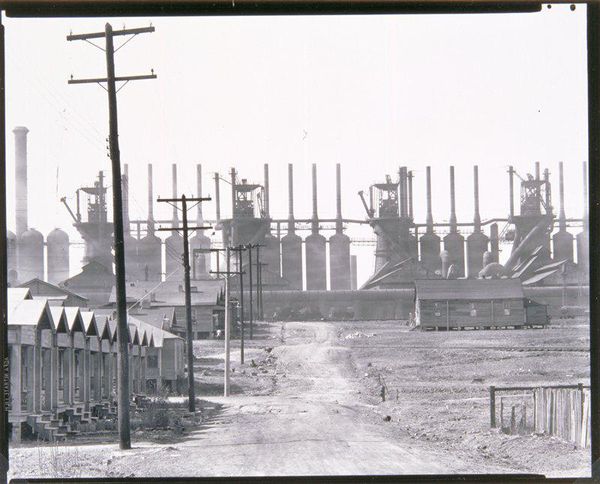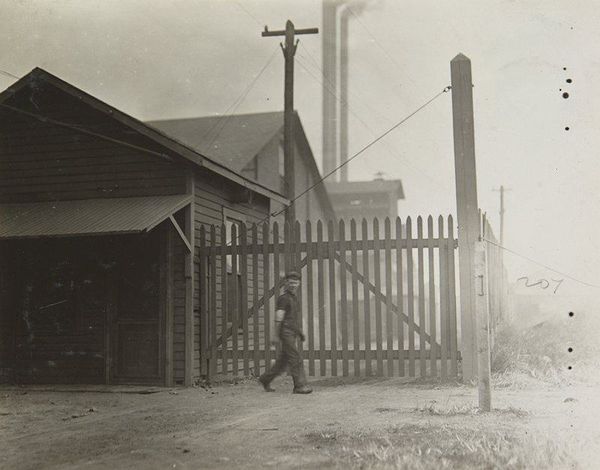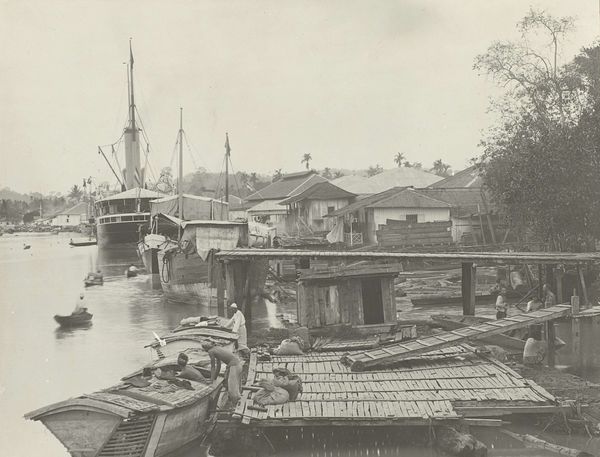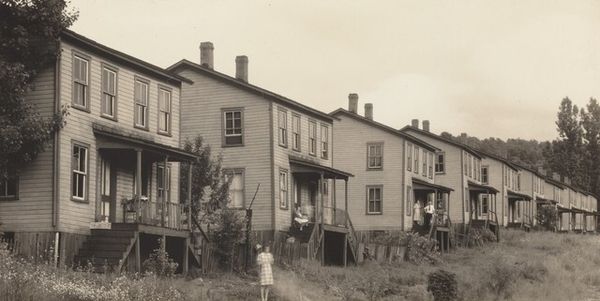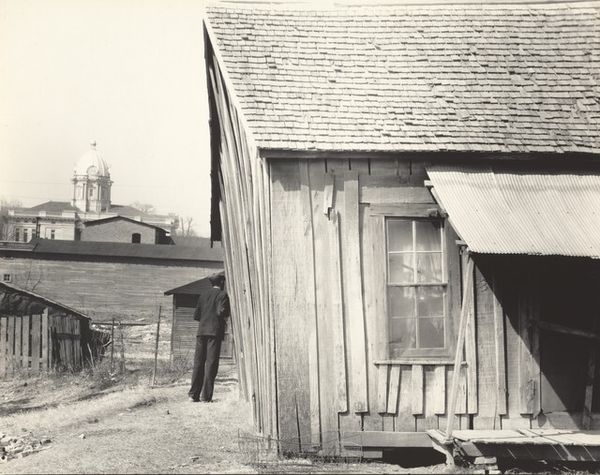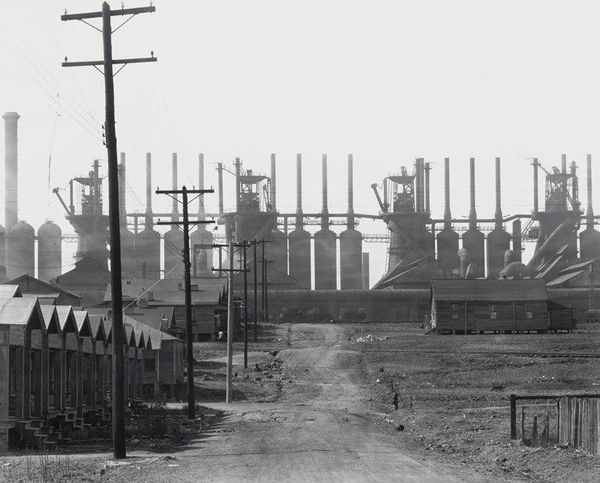
photography
#
landscape
#
social-realism
#
photography
#
cityscape
#
monochrome
#
realism
#
ruin
#
monochrome
Dimensions: image: 32.7 × 47.9 cm (12 7/8 × 18 7/8 in.) sheet: 40.6 × 50.5 cm (16 × 19 7/8 in.)
Copyright: National Gallery of Art: CC0 1.0
Editor: This is Andrew Borowiec's "Mingo Junction, Ohio" from 1986. It's a black and white photograph and, at first glance, I'm struck by the contrast between the residential area and the imposing industrial structure looming in the background. What do you see in this piece? Curator: I see a poignant commentary on labor and its impact on the landscape and community. Notice the starkness of the black and white, how it flattens the scene. Borowiec isn’t just showing us a view; he’s revealing the tangible cost of industry on the everyday lives of people living there, no? How do the materials, wood and steel for example, highlight this? Editor: That's interesting, the idea of the materials themselves as being key. The houses seem almost fragile in comparison to the steel mill. Is the process that turned raw ore into steel echoed in the image's composition? Curator: Precisely. The means of production dictate the layout of the town itself. Houses are squeezed next to the factory. It illustrates the complete saturation of industrial processes in daily existence. Borowiec’s photograph questions traditional distinctions, presenting a landscape that merges utility with ruin. What feelings arise when you think about the residents consuming materials made nearby? Editor: A bit of a double-edged sword, I suppose. Jobs and livelihood connected to potential environmental or health concerns from the factory's outputs. It is a raw and honest depiction of the intertwined relationship between labor, living conditions, and industrial output. I didn't consider how important materiality was! Curator: Exactly! By observing these intersections we see more. It's not merely documenting a place, but underlining socio-economic realities that impact every corner of this location. The steel isn’t just an element. It *is* life itself. Editor: I’m left pondering how progress affects communities when raw materials transform into industrial ones. I definitely see so much more now, viewing labor’s presence and effects!
Comments
No comments
Be the first to comment and join the conversation on the ultimate creative platform.



